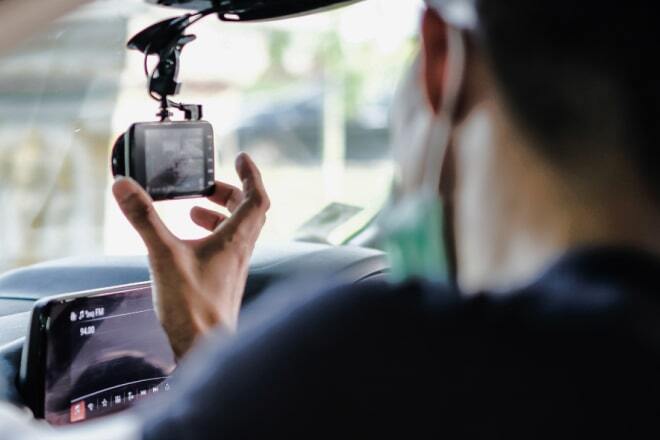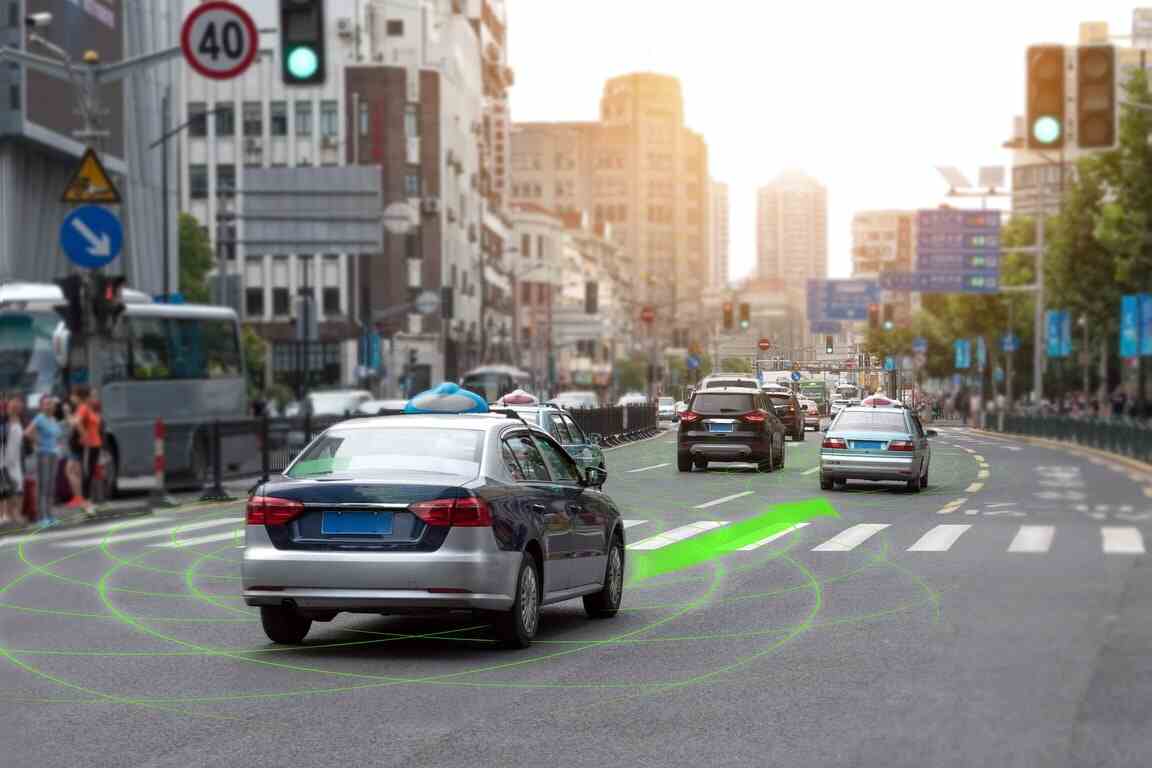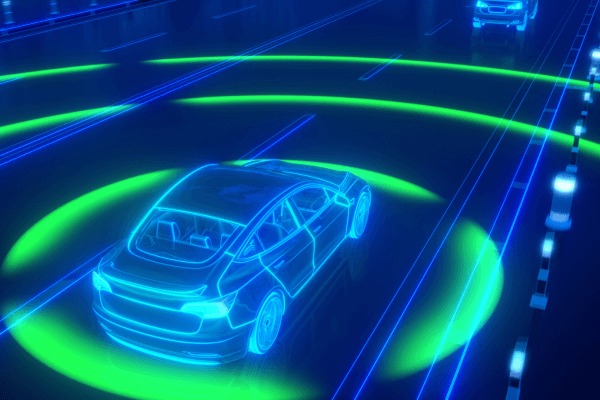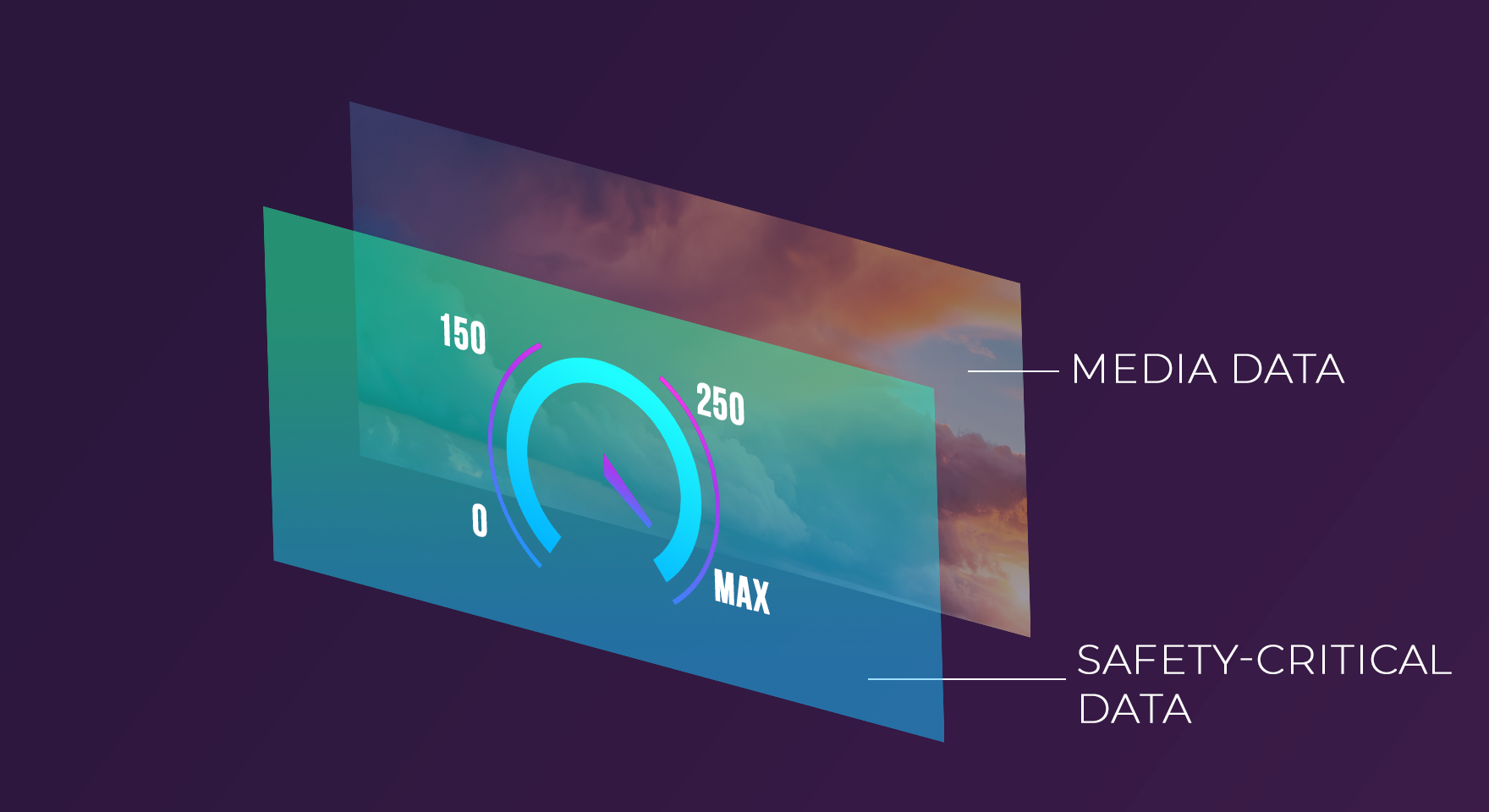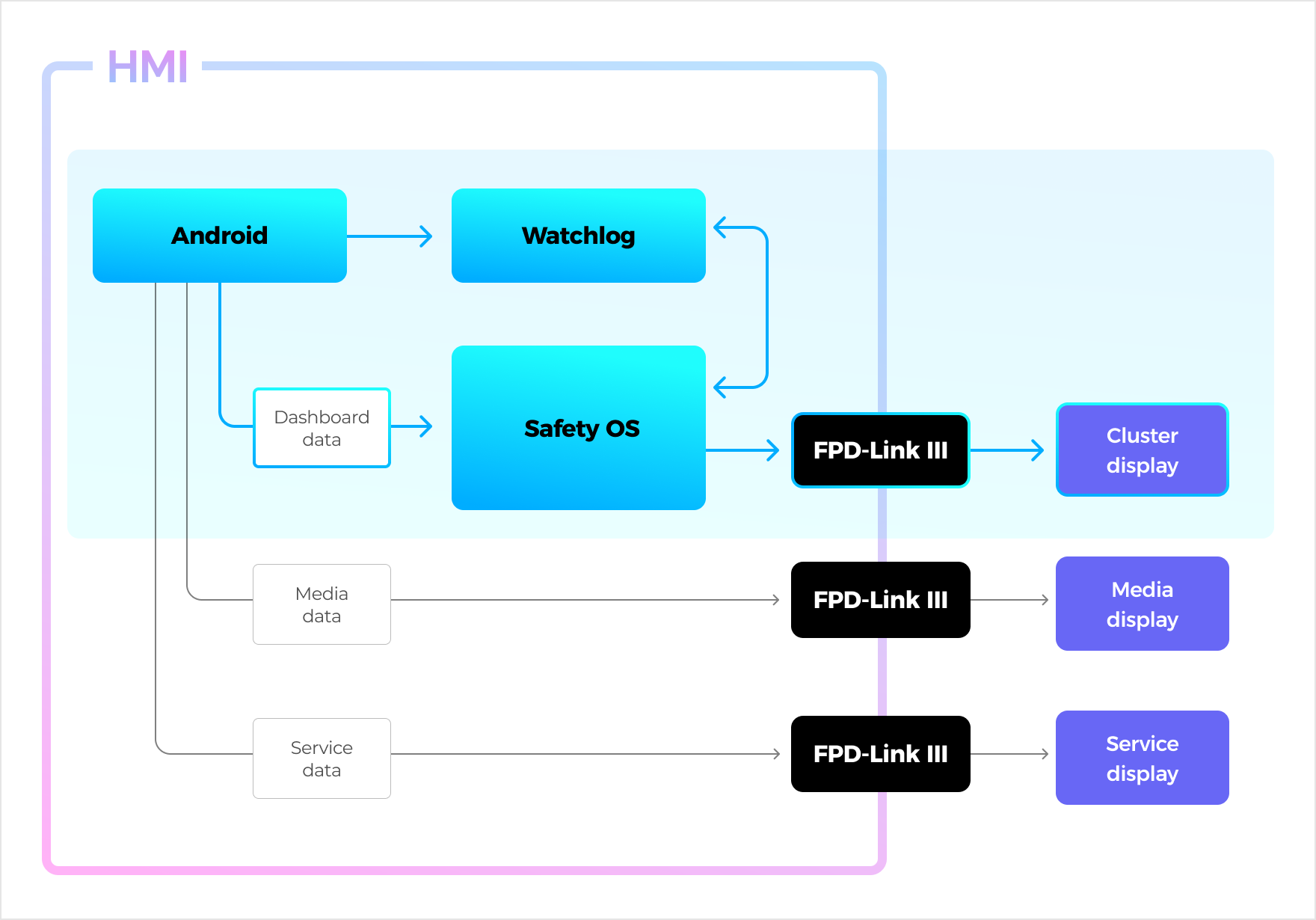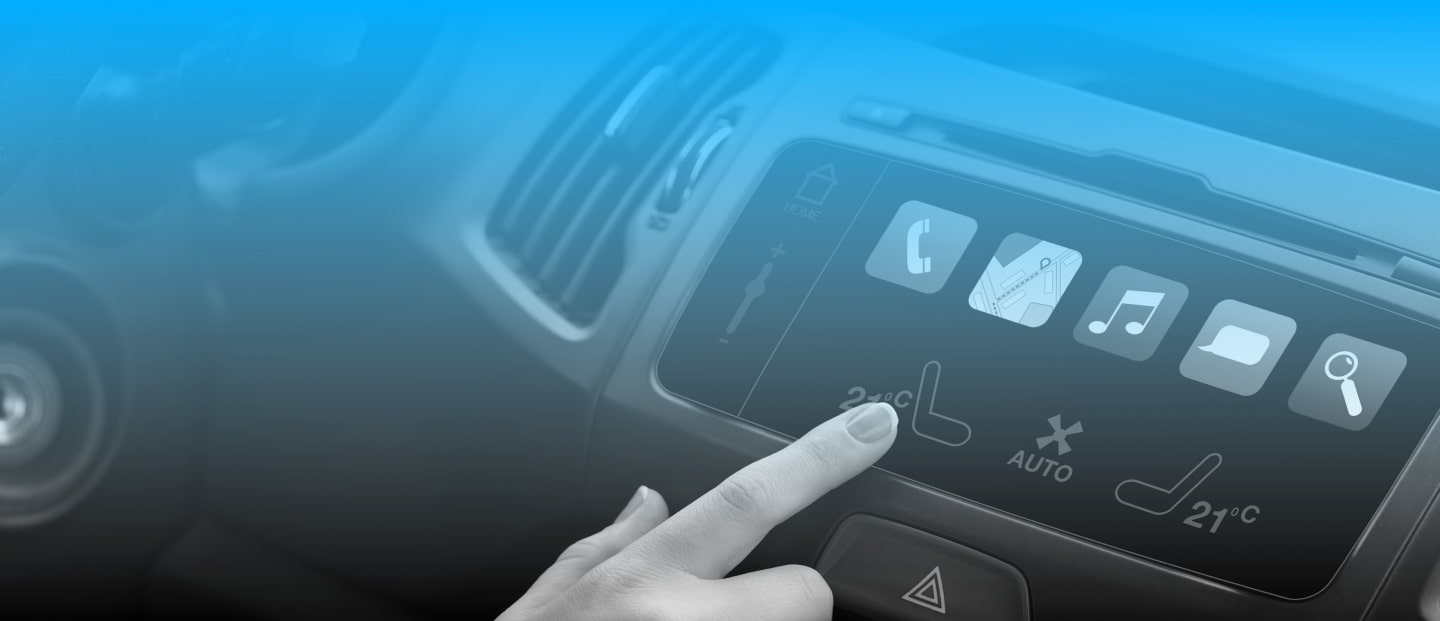
Multimedia Unit for Electric Vehicles
Displaying multimedia, navigation, and car operation data in real time
The client specializes in the production of electric cars. The company wanted to develop a multimedia module for their vehicles. It would be a central hub for information about the vehicle’s operation and location.
Case Highlights
- Two device versions (Qualcomm Snapdragon 820 and NXP IMX8 Quad Max)
- Features a safety RTOS
- Compliant with the ISO 26262 ASIL-B requirements
- Interfaces with multiple displays
- Supports Wi-Fi, LTE, and Bluetooth connectivity
- Applies noise cancellation algorithms
- Supports AM, FM, DAB, DAB+ radio standards
- Features a high-end multi-channel audio amplifier, class D
Project Information
T&M (time and materials)
Agile
Solution Architect
Software Developers
QA Engineers
PCB Designers
Schematic Engineers
Project Manager
Problem
The client needed an HMI unit that interfaces with many displays.
The solution would provide real-time data on the vehicle’s operation and location. It would also let drivers access in-car apps and services.
Softeq was employed to provide device architecture and functional design. We were also tasked with building the hardware and middleware. We had to ensure that the solution complied with automotive safety standards. It would display critical information should the main operating system crash.
Solution
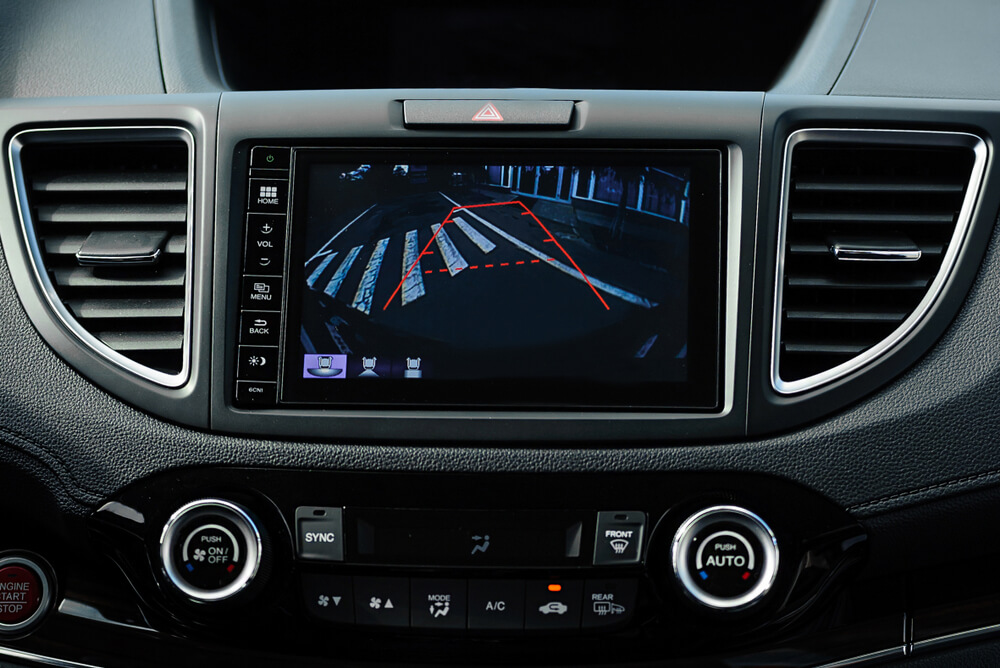
Our Approach
Softeq helped the client create a multimedia unit based on two different generations of processors.
The customer planned to bring their products to the market in a short time frame, so they wanted to start testing the multimedia unit as soon as possible. We proposed a modular solution architecture, which would allow us to quickly adapt the multimedia unit should the customer decide to change their requirements based on the test results.
Choosing the Right Processor
We examined 10+ solutions available on the market and opted for the Snapdragon processor (Qualcomm) as a basis for the first generation units.
Through this process, we designed the current version of the device, which uses one of the latest NXP processors.
Display Interfaces
The multimedia unit supports multiple connectivity options to interface with a range of displays:
- Cluster display (dashboard information)
- Media display (music, climate control, navigation, radio, browser)
- Service display (vehicle documents)
- Head-up display (projecting critical driving information onto the windshield)
- Optional displays (in-car media streaming)
Connectivity
The solution supports multiple connectivity methods.
Automotive gateway:
- Automotive Ethernet
- LIN
- CAN
External connectivity:
- Wi-Fi
- LTE
- Bluetooth
Wired interface:
- Ethernet
- MOST
Cameras and Display Subsystems
The multimedia unit has four camera FPD-Link III and GMSL inputs and four FPD-Link III display inputs. For the display subsystem, we developed a custom universal adapter to support various types of LCD panels. The adapter receives the signal via FPD-Link lll from the multimedia unit, decodes it, and delivers it to the display. The adapter is also responsible for managing backlight, vibration feedback on the touch-screens, and additional buttons.
Safety
The multimedia unit is running on Android. In addition to the dashboard, it also displays media and service data. In the event of an error, it is possible that the Android operating system will crash.
To ensure that safety-critical data will be displayed at all times, we integrated SAFERTOS. It uses a watchdog to monitor Android performance and reliability. If Android fails or becomes unresponsive to a driver’s commands, SAFERTOS will reboot the Android OS and display safety-critical information like the speedometer, tachometer, gearbox, braking system status, etc.
Audio Noise Cancellation, Radio, Sound
The vehicle features a sound processing system that incorporates six microphones. Two microphones capture the driver's voice, while the other four capture extraneous noise like engine sounds and noise from the street.
Together with the client's team, Softeq developed algorithms that subtract the extraneous noise captured by the other four microphones from the driver's voice, allowing them to give clear verbal commands to the system.
The unit also supports connection to AM, FM, DAB, and DAB+ radio sources, features a high-end 4-chs audio amplifier, audio digital interface MOST, and analog aux outs. The advanced audio system is capable of delivering 5.1 sound.
Similar Project Idea?
See how we integrate hardware, software, and advanced GUIs into cohesive systems that enhance user interaction and provide operational efficiency Learn more
Result
Project Outcomes
Over the last 4+ years, Softeq helped the client create two distinct generations of the multimedia unit—from concept to market-ready devices. The first generation is currently being used in the customer’s products. The second generation is presently being prepared for mass production.
Related Articles

